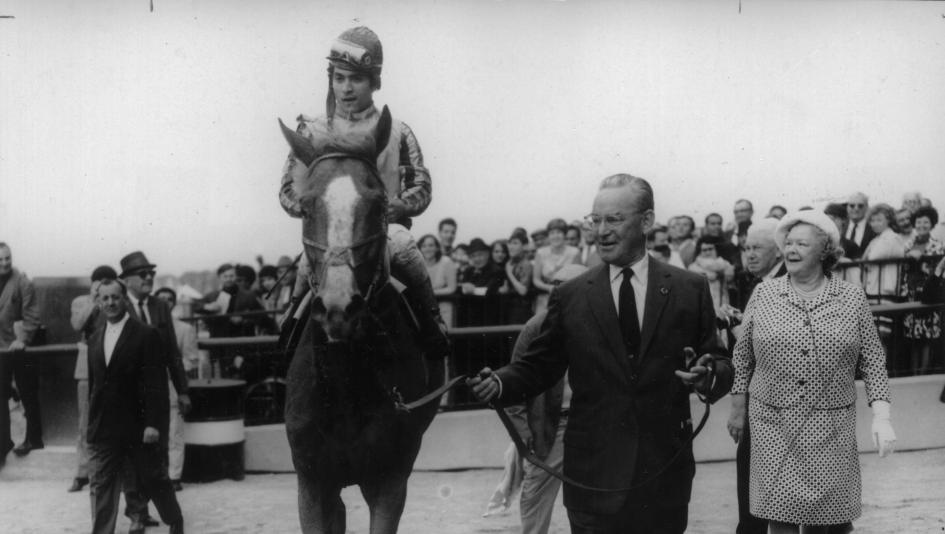John Hay Whitney (Jock) (1904-1982)
The surname Whitney was synonymous in the early part of the century in political and racing circles. Indeed, both of Jock Whitney’s grandfathers had served in the upper echelons of the White House with roles including Secretary of the Navy and Secretary of State.
Despite an astronomical wealth - he inherited a trust fund of $20 million (approximately $343.9 million today) from this father and later inherited four times that amount from his mother – Jock started his business career as a clerk for an investment bank. He went on to found the self-titled JH Whitney and Co, America’s oldest Venture Capital firm. He was once listed as one of the 10 richest men in the world as was rumoured to have dated Hollywood starlets including Tallulah Bankhead and Joan Crawford. He met Fred Astaire when they were students and the pair were life-long friends, bonded by their love of horse racing.
Alongside successful investments in theatre and film – his company was one of the backers for Gone With the Wind – the Whitney family were also heavily involved in horse racing. Jock and his sister ran Greentree Stables. In 1928, he became the youngest member ever elected to The Jockey Club in America.
Jock also held interests in racing in Europe, and in particular National Hunt racing. His best horse was Easter Hero, who was the first dual winner of the Cheltenham Gold Cup in 1929 and 1930. He also went close to taking the 1929 Grand National, suffering a twisted shoe in his defeat under the welter burden of 12 stone 7 lbs.
Easter Hero’s first victory in the Cheltenham Gold Cup was a startling 20 length victory over Lloydie, where he never saw another rival. Whitney had only recently brought the horse after the horse’s original owner – Captain Lowenstien, had vanished when flying his private plane over the North Sea. The Festival that year had been delayed a week because of the terrible frost which had beset the country that winter. It was the third time jockey Dick Rees had won the Gold Cup in its short six-year history.
The following year, however, Rees was claimed to ride Easter Hero’s chief rival Gib. Instead, the gelding was ridden by Tommy Cullinan. Things didn’t get off to the greatest start with the pair uprooting the first two fences, but they soon found their rhythm and turning for home had Gib under pressure before Rees and his charge fell at the second last, leaving Easter Hero to score again by 20 lengths.
Injury then interrupted Easter Hero’s career. But not before he ran in the 1931 Grand National, where he was knocked over at Becher’s second time round. Incredibly, he dead heated in the two-mile Champion Chase just 24 hours later. Jock decided to let him end his career on this winning note, retiring him to live out his days hunting him in Virginia, where he lived to the ripe old age of 28.
Jock, meanwhile, went on to be U.S. Ambassador to the UK from 1957-1961, was publisher of the New York Herald Tribune, and president of the Museum of Modern Art. In 2015, Whitney was posthumously inducted to the National Museum of Racing's Hall of Fame as Pillar of the Turf.


